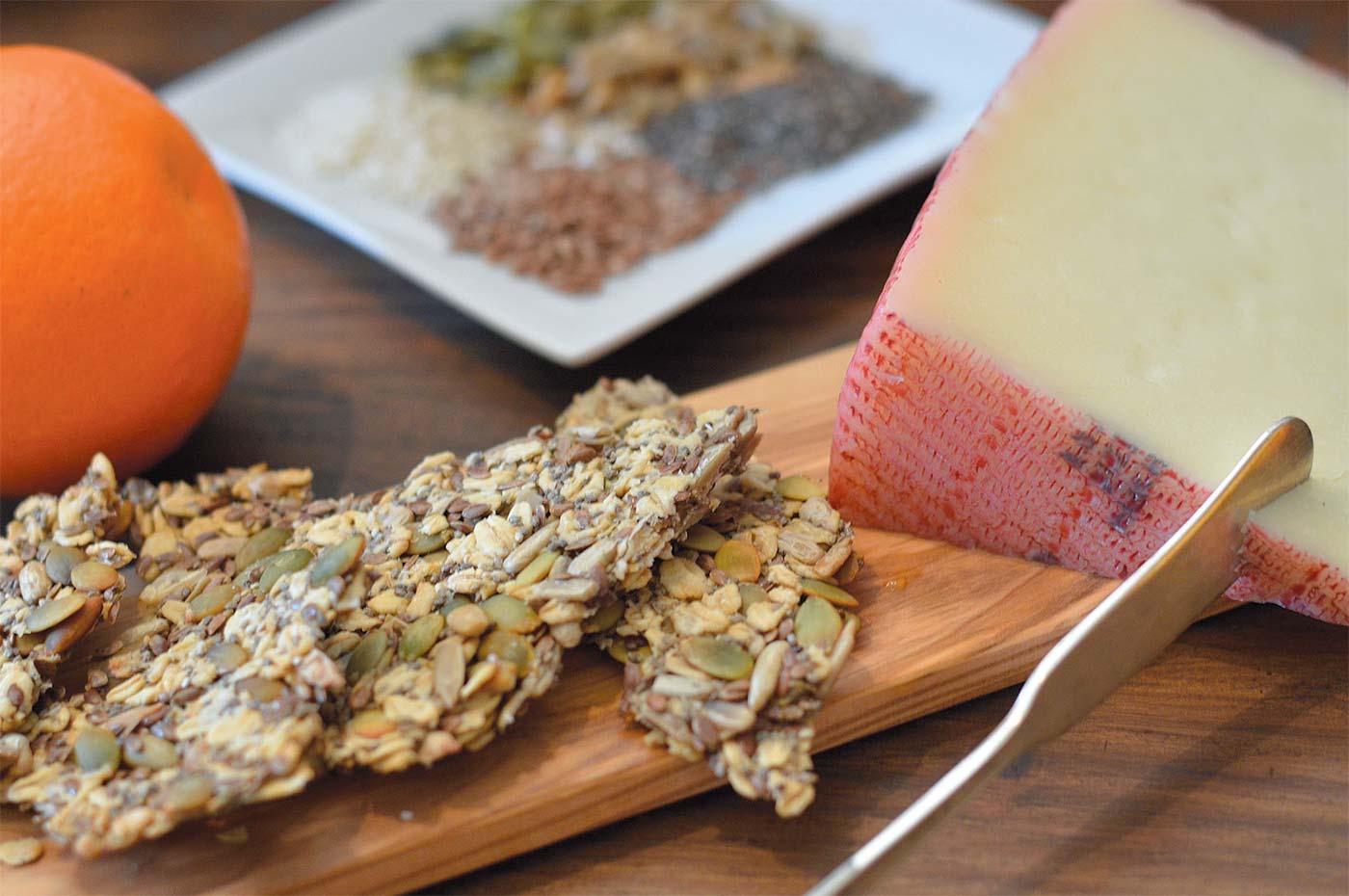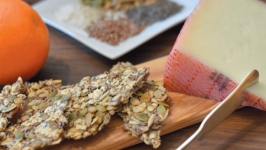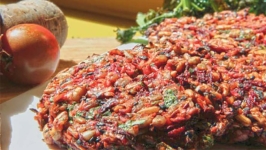Here are Some Seeds of Knowledge
Small ingredients often carry the biggest punch. Enter edible seeds. They’re full of nutrients, can provide a nice crunch of flavor and, best of all, are gluten-free.
Most of us have cooked with or at least heard of quinoa. This power-packed protein source has jumped to the forefront of edible seeds in recent years. And although you may have sprinkled fl ax or chia seeds on your morning yogurt, you probably haven’t thought of using them as an ingredient in a recipe.
I like to consider myself a culinary seed pioneer. Twenty-plus years ago when I owned a restaurant in Door County with my husband, I often made my own vegetable burgers so I would have something to grab for a quick lunch. My head chef, Eric Thomas, would make fun of me, referring to my luncheon snack as my birdseed burgers.
The reason? One of the main ingredients was millet, an edible seed that is common in African cuisine and loaded with iron and vitamin B. It’s also a common ingredient added to birdseed blends. But in the mid-1990s, millet was not a common ingredient in American cuisine.
In recent years, edible seeds, including millet, have found their way into many recipes.
With all the edible seeds now available for easy purchase, it can be difficult to figure out which ones are which. Here’s a quick guide to some of my favorite seeds along with a couple of recipes to get you started.
QUINOA - Quinoa is the edible seed from the goosefoot plant, which is grown in higher elevations. The Andean region of South America has been the primary quinoa-growing area for over 7,000 years. The plant is related to amaranth, which is also harvested for its small seeds. After harvest, the seeds are processed to remove a bitter-tasting outer coating. Even though this bitter coating is removed from commercially sold quinoa, it is still recommended to give quinoa a good rinse before cooking.
That tiny quinoa seed is loaded with nutrients. It’s considered a complete protein as it contains all nine of the essential amino acids. The majority of quinoa that is consumed is a white or ivory color, but quinoa is also available in a black and reddish hue.
When it comes to cooking, quinoa preparation is similar to rice, taking approximately 15 minutes to cook. You’ll know it’s done when you see the quinoa expanding and becoming slightly translucent on the sides.
MILLET - Millet is also an ancient seed, originally grown in Africa and northern China. Although not as common in North American cuisine, the seed remains a staple in the diets of about a third of the world’s population. Rich in iron, vitamin B and calcium, millet has a mild corn-like flavor.
To enhance the flavor of millet, it is often toasted before cooking. Simply place the millet in a dry sauté pan and heat on medium, stirring now and then, until the seeds are fragrant and toasty in color. Millet is also prepared similarly to rice, with one cup raw millet being cooked in 2 cups water. The millet will be fluffy in texture using this method. For a creamier millet, similar to polenta, use 3 cups water to 1 cup millet.
CHIA SEEDS - Chia is an edible seed from a flowering plant native to Central America. Small and grayish in color, these small seeds have a special power. The seeds are hydrophilic, meaning they absorb up to 12 times their weight in liquid. Although chia seeds may be found sprinkled in a recipe to provide a mild, nutty flavor, they are often soaked in a liquid to serve as a thickening agent or to create chia-based creams that have a distinctive gel-like texture
SUNFLOWER SEEDS - When in their shell, the seeds are processed then dried. Afterward, they are often roasted or dusted with salt for preservation and flavor. When the hulls are removed, the edible remainder is called the sunflower kernel or heart.
Although more often eaten as a snack, the sunflower seed kernel can also be added to recipes to add a nice crunch. In raw cooking, the seeds are commonly sprouted and served in salads.
PUMPKIN SEEDS - Also known as pepitas, the pumpkin seed is the edible seed of certain types of pumpkins. The seeds are flat and oval with a light green color. Some pepitas have a white outer hull that is removed, while other varieties of pumpkins are cultivated only for their green colored seed. Pepitas are full of healthy fats, magnesium and zinc. They also add a great crunch to a salad or trail mix.
The Styrian pumpkin, grown mainly in Austria, is cultivated only for its hull-free seed that is then turned into pumpkin seed oil. Often referred to as “black oil” or “green gold,” pumpkin seed oil has a nutty taste and is packed with vitamins B1, B6, E, A and K. The treasured oil is created through a cold pressing process similar to making olive oil.







